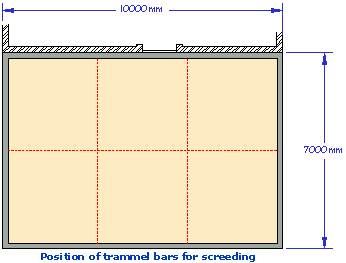Question, for a plot roughly 10 mtr wide (across the front of the house)and 7 mtr deep(from house to road). Looking at the plot from the road, it is roughly rectangular, Taking the corner at the left side of the house there is a slope down hill to the kerb (At least the rain will all go 'south' away from the house), the slope from the right side of the house to the kerb at the front is steeper, and there is also a slope from the left side of the plot down the kerb line to the right side....
I don't have the detail but assume the fall from top left to the kerb over the 7mts is .5mtr, and the fall from the right side of the house to the kerb is 1mtr, and the fall from the kerb at the left side of the plot downhill to the right side of the plot is .75mtr.
How do I establish a level across the 70Sq Mtrs to establish a good base with consistant depth and 'level' sand bed that will result in a smooth, clean and tidy block driveway. Using Marshalls Driveline 50mm block. 1 course of dark grey soldiers, around the edge, with a single course of buff stretcher bond inside and the main drive being done with brindle set out in 45degree herringbone . - May even have a go at the three interlocking diamonds (as shown on the Paving expert Web) to give it something over and above all the other Charcoal/Buff and Brindle driveways!!!
Any advise greatly appreciated. Cheers Mark V
What Level?
-
84-1093879891
When it comes to the paving, the first thing to do is lay the edge courses to the perimeter then, when you're preparing the screeded bed, split it into 3 'bays' each roughly 3.3 metres wide by using Guide Rails (Trammel Bars) within the screed as described on the Screeding page, with the level of each guide rail set using the taut string line stretched from side to side to establish intermediate levels. On this particular project, I'd split the trammel bars into two lengths, so that, in effect, you've divided the pavement bed into 6 bays - 3 bays wide and 2 bays deep.

Once screeded, you'll need to smooth out the highspots that will be formed where you placed the trammel bars. This is covered in the Section on the Screeding page that deals with "Cambers and Dishes". The final screeded bed should be fairly accurate and very 'sweet' with no obvious bumps or dips at all. Take your time with it - keep going over it, "tittivating", as we say, until you're 100% happy with the profile. Then, and only then, should you start to lay the blocks of the pavement body.
Assuming you've thoroughly compacted the sub-base and the bedding is evenly compacted to a regular thickness, the final profile of that bed will, to within a few millimetres at most, replicate the finished profile of the pavement. It's much easier to adjust the sand bedding than to lift blocks, re-screed and then re-lay, so time spent ensuring the bed is spot-on is time well spent. It's much better to spend an extra half-hour checking the bed than to rush in with the blocks only to find you've a ridge running right down the centre!
Flexibly-laid block paving is a very forgiving medium in which to work, so, even if you do make a boob, it's not all that difficult to lift and re-lay - far easier than it would be with a non-elemental paving such as concrete or bitmac, so don't fret too much. Take your time, and ask for help if you get stuck! :)

Once screeded, you'll need to smooth out the highspots that will be formed where you placed the trammel bars. This is covered in the Section on the Screeding page that deals with "Cambers and Dishes". The final screeded bed should be fairly accurate and very 'sweet' with no obvious bumps or dips at all. Take your time with it - keep going over it, "tittivating", as we say, until you're 100% happy with the profile. Then, and only then, should you start to lay the blocks of the pavement body.
Assuming you've thoroughly compacted the sub-base and the bedding is evenly compacted to a regular thickness, the final profile of that bed will, to within a few millimetres at most, replicate the finished profile of the pavement. It's much easier to adjust the sand bedding than to lift blocks, re-screed and then re-lay, so time spent ensuring the bed is spot-on is time well spent. It's much better to spend an extra half-hour checking the bed than to rush in with the blocks only to find you've a ridge running right down the centre!
Flexibly-laid block paving is a very forgiving medium in which to work, so, even if you do make a boob, it's not all that difficult to lift and re-lay - far easier than it would be with a non-elemental paving such as concrete or bitmac, so don't fret too much. Take your time, and ask for help if you get stuck! :)